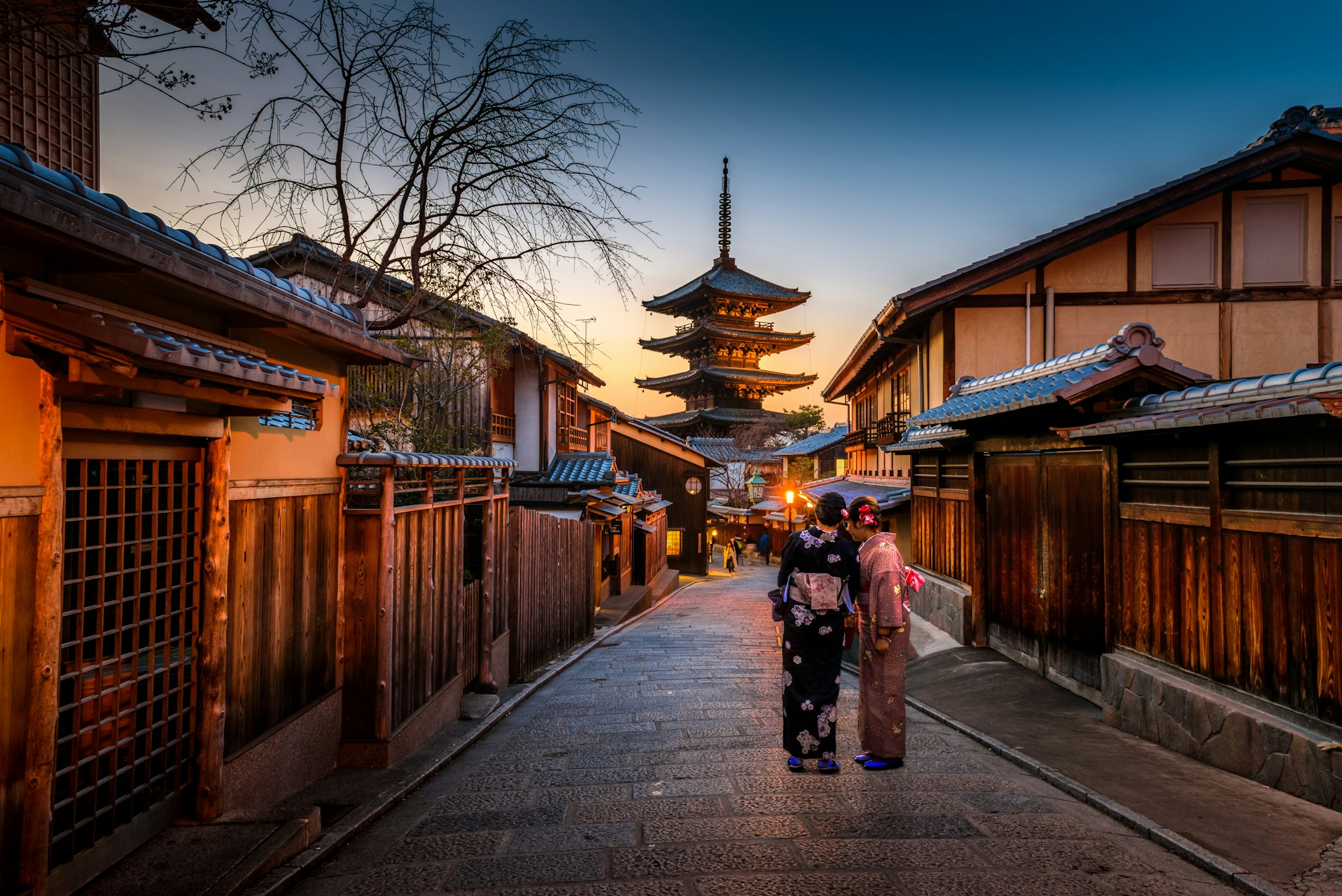Kyoto

Kyoto, the heart of traditional Japan, stands as a timeless testament to Japan’s rich cultural heritage. Once the imperial capital for over a thousand years, this city, nestled among the mountains of the Kyoto Basin, is a living museum of Japan’s history, boasting an unparalleled collection of temples, shrines, palaces, and gardens that captivate visitors from around the world.
Unlike Tokyo’s modernity or Osaka’s bustling urban life, Kyoto exudes a serene, almost mystical quality, with its ancient streets and architecture offering a glimpse into Japan’s feudal past. The city is home to an impressive 17 UNESCO World Heritage Sites, each telling a story of the city’s spiritual and imperial history.
The Golden Pavilion, or Kinkaku-ji, is one of Kyoto’s most iconic sights, a Zen temple whose top two floors are completely covered in gold leaf, reflecting brilliantly in the pond before it. Equally striking is the Silver Pavilion, Ginkaku-ji, which, despite its name, was never covered in silver. Instead, it is renowned for its beautiful sand gardens and the moss-covered grounds that embody the wabi-sabi aesthetic, emphasizing beauty in simplicity and impermanence.
Kyoto’s historical narrative is also vividly alive in the sprawling precincts of the Fushimi Inari Shrine, famous for its thousands of vermilion torii gates that trail up the mountain. The shrine is dedicated to Inari, the Shinto god of rice, and has been a place of worship since before Kyoto became the capital.
The ancient practice of kaiseki, a traditional multi-course Japanese dinner, epitomizes Kyoto’s culinary heritage. This elaborate meal emphasizes seasonal ingredients, artful presentation, and a balance of taste, texture, and appearance, offering a culinary experience deeply rooted in Zen Buddhism and the tea ceremony culture.
Kyoto’s Gion district, known for its wooden machiya houses, is the heart of the city’s geisha (geiko in Kyoto dialect) culture. Here, visitors can catch a glimpse of geiko and maiko (apprentice geiko) in their exquisite kimonos and elaborate hairstyles, attending to exclusive tea houses and entertainment quarters. Gion, along with other preserved districts like Pontocho and Hanami-koji, offers a window into the traditional art, dance, and music that geiko and maiko master.
The city is also famed for its seasonal beauty, from the delicate cherry blossoms of spring to the vibrant reds and oranges of autumn. The Philosopher’s Path, a stone walkway that follows a cherry-tree-lined canal, is particularly popular during sakura season, while the Arashiyama Bamboo Grove offers a year-round spectacle with its towering bamboo stalks.
Kyoto’s commitment to preserving its past does not mean it is stuck in time. The city seamlessly blends tradition with modernity, evident in its thriving arts scene, contemporary galleries, and innovative restaurants that reinterpret classic Japanese flavors. The Kyoto International Manga Museum and the yearly Kyoto Animation Fair celebrate Japan’s contribution to the world of animation and manga, showcasing the city’s dynamic blend of the old and the new.
In conclusion, Kyoto is a city where the ancient and the modern coexist in harmony, offering visitors a profound sense of Japan’s cultural depth and beauty. It invites exploration and reflection, promising an enriching experience that connects the past with the present in the heart of traditional Japan.